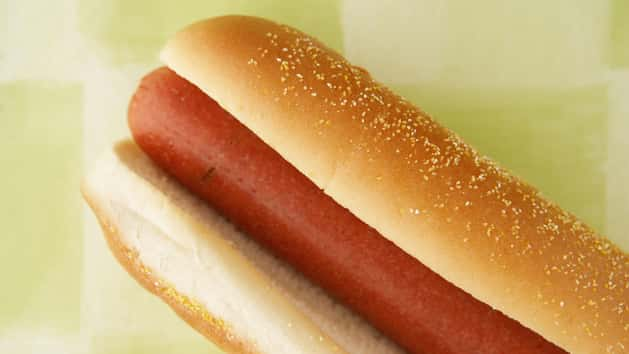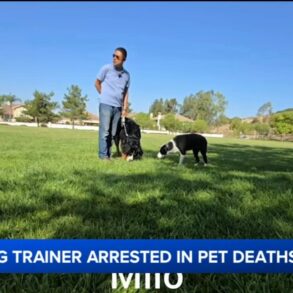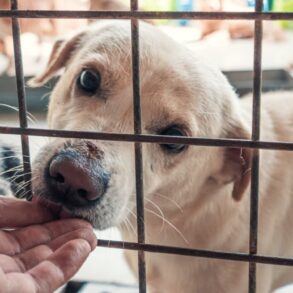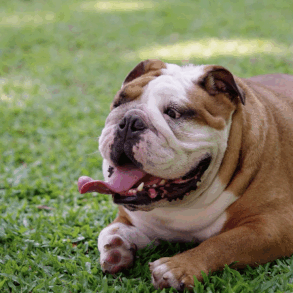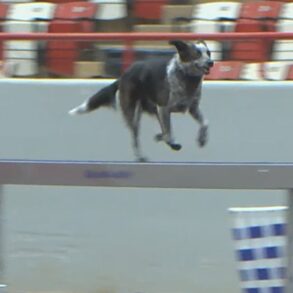In my neighborhood, people don’t wait for Memorial Day to fire up their grills. The minute the weather turns, you can smell propane and sizzling patties from three doors down. Burgers and hot dogs might seem like the easiest thing to throw on the barbecue, but according to experts, that simplicity is exactly what makes them so easy to mess up.
HuffPost spoke with grill experts across the United States about their biggest pet peeves when attending a backyard cookout.
1. Squishing The Burger (With One Exception)
Unless you’re making a smash burger on a griddle, step away from the spatula. Pressing your patty flat on the grill might look satisfying, but it’s a one-way ticket to dry, flavorless meat.
“If you’re pressing your burgers down, then you are squeezing out all that delicious flavor,” shared Danielle Bennett, pitmaster and Barbecue Hall of Famer, based in Central Florida. “Dried-out burgers are not tasty.”
Steven Raichlen, multi–James Beard Award winner, PBS host and author of ”Project Griddle,” puts it plainly: “Do use a spatula for flipping burgers. Don’t press the tops of burgers with the spatula. You’ll squeeze out all the succulent juices.”
2. Guessing When Your Meat Is Done
You’ve probably heard the saying, “cooking is an art, baking is a science” — but grill masters would argue that grilling leans heavily on science, too. And if you’re eyeballing doneness or giving your patties a quick poke to check if they’re done? You’re setting yourself up for disappointment.
“Food is properly cooked when the thermometer says so. Cook with a thermometer, not a clock. And you absolutely cannot tell by poking the meat with a finger,” said Meathead Goldwyn, Barbecue Hall of Famer, founder of AmazingRibs.com and author of the bestselling ”Meathead: The Science of Great Barbecue and Grilling.”
Bennett seconded that: “There is no reason to cut into a burger to see the internal color anymore. Color is not an accurate indicator. No reason to have a burger under- or overdone. Consistent, repeatable results are absolutely attainable for each and every burger this grilling season.”
She recommends using tools like handheld digital thermometers or smart probes that offer “absolute accuracy every time.”
Cooking ground beef to an internal temperature of 160 degrees Fahrenheit (as recommended by the Food and Drug Administration) isn’t just about flavor; it’s about safety. Unlike steak, which can have bacteria on its surface, ground meat can have it mixed throughout. Unless you like a side of E. coli with your cheeseburger, grab a thermometer.

3. Grabbing Whatever Hamburger Mix Is At The Grocery Store
From deli-counter patties to shrink-wrapped logs of beef labeled “ground meat,” it’s easy to assume it all goes on the grill. After all, if it says “burger” on the label, it must be grill-ready, right? Not quite. According to our experts, these convenient options often sacrifice quality and flavor.
“Avoid buying meat labeled ‘hamburger’ or ‘ground beef,’” Goldwyn said. “They are substandard quality. Freshly ground meat is better than frozen. You can ask your butcher to grind it for you. If you pick a nice piece of chuck, you’ll likely be in the 20% fat range. Ask her to add enough fat to make it 30%. If you have a choice, take a hardworking cut like flank steak or short plate, because it tends to have more flavor and have her grind that with added fat.”
Prepackaged ground beef, especially those sitting around in styrofoam trays or frozen logs, can also have a mushier texture, less beefy flavor and more moisture loss during cooking.
As Bennett aptly notes, “Invest in better quality meat always, wherever possible.”
4. Grilling Your Hot Dogs In The Wrong Direction
Most of us don’t give much thought to how we place hot dogs on the grill, as long as they don’t fall through the grates. But according to grilling experts, the direction matters more than you’d think.
“To grill hot dogs evenly, position them lengthwise between the bars of the grill grate,” Raichlen said. “Give each a quarter turn after the bottom is blistered and browned, and keep turning them until all sides are browned.”
Instead of laying them across the bars, place them parallel to the grates — so the hot dogs rest in the gaps between bars, not on top of them.
“I like to try to straighten curved tubes and put the parallel to and between the grill grates, not perpendicular to the grates,” Goldwyn said. “The grill marks may seem odd, but this method makes it easy to turn them in quarter turns to get even cooking. Just roll them from between two grates to the next two grates. Repeat on all sides.”
It’s a small tweak but one that helps prevent split skin, cold centers and uneven charring — and gives you that perfect, juicy bite every time.
5. Choosing The Wrong Hot Dogs
Hot dogs often get a bad rap for being full of fillers and mystery meat, but that doesn’t mean you can’t find quality options. According to grilling experts, the type of hot dog you choose makes all the difference when grilling and eating.
“When it comes to making the best ever hot dog on the grill, always use a 100% all-beef wiener that has a great casing,” Bennett said.
For the best bite, look for hot dogs with natural casings — they’re known for their tenderness and that satisfying snap when you take a bite. If that’s not your thing, collagen casings are also a solid option, offering a similar texture without the old-school vibe.
Raichlen agrees, adding a personal favorite: “I’m partial to Hebrew National. (They answer to a higher power.)”
rnrn”,”
rnrn”,”
rnrn”],”adCount”:0}}”>
This post was originally published on this site be sure to check out more of their content.




